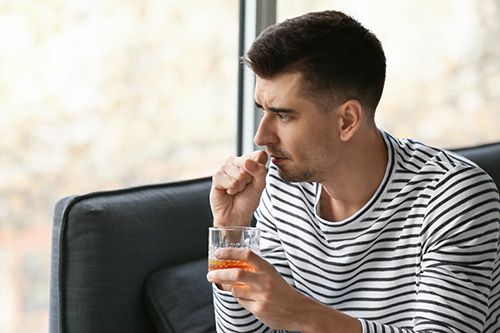Gen Z Drinking Less While Struggling With Other Addictions
In recent years, one clear trend has emerged: Gen Z is drinking less alcohol than previous generations. While this might seem like a healthy shift, it comes with a troubling twist. Many in Gen Z are turning to other addictive substances instead of alcohol. Find out why Gen Z is drinking less and how new addictions are becoming more common. Doing so can help young adults determine when to seek help to overcome drug addiction.
Is Gen Z Drinking Less?
Yes, the data shows a steady decline in alcohol use among Gen Z. Studies reveal that fewer Gen Z adults drink regularly compared to millennials. Social norms have changed, and many in Gen Z now see alcohol as unhealthy or unappealing. Young adults are more cautious about hangovers, drunk driving, and long-term health risks. This has helped shape a culture where drinking is no longer the primary form of socializing.
This drop in alcohol use, however, does not mean Gen Z is avoiding all addictive behaviors. Many experts believe this generation is simply shifting toward different substances, leading to an increase in drug addiction.
Why Is Gen Z Drinking Less?
There are several key reasons why Gen Z is drinking less than previous generations. These factors reflect new priorities and social values that influence daily choices.
- Health Consciousness: Many Gen Z individuals abstain from alcohol to maintain their physical and mental well-being. They prioritize clean eating, fitness routines, and good sleep, all of which alcohol can disrupt.
- Sober Curiosity: The sober curious movement has gained significant momentum among Gen Z. Young adults are now exploring life without alcohol to see how it affects their mood, focus, and social life.
- Changing Social Norms: Drinking is no longer the default for having fun or making connections. Gen Z prefers authentic, low-pressure hangouts that do not revolve around alcohol.
- Mental Health Focus: This generation values emotional well-being and knows alcohol can worsen anxiety and depression. Avoiding alcohol is one way they protect their mental health.
- Increased Awareness of Alcohol Addiction: Gen Z is more aware of the dangers of alcohol misuse. Many want to avoid dependency and long-term health problems by choosing to drink less or not at all.
- Rise of Social Media: The increased use of social media has created new pressures surrounding image and behavior. Drinking in public or posting while drunk can damage reputations.
Gen Z’s Shift to Using More Drugs
Although alcohol use is down, Gen Z addiction rates for drugs and other substances are on the rise. This shift is deeply concerning to public health experts. Young adults are now experimenting more with cannabis, prescription pills, and psychedelics.
Some also misuse ADHD medications, benzodiazepines, or opioids to cope with stress. Vaping and nicotine addiction have also become major issues within this age group. As Gen Z avoids alcohol, many fall into new patterns of dependence that are just as harmful.
Why Gen Z Uses Drugs More Than Alcohol
Several factors explain this growing shift. One reason is Gen Z social media addiction, which plays a large role in shaping behaviors. Constant exposure to influencers and content that normalizes drug use can lead to curiosity and experimentation.
Another major factor is Gen Z mental health challenges. Anxiety, depression, and trauma are common struggles, and many turn to substances to cope. The Gen Z mental health crisis has left many without proper support, pushing them to self-medicate with drugs instead of seeking therapy.
Drugs may seem like a quicker escape from emotional pain. However, without proper treatment, drug use only adds to the problem. Unlike alcohol, some drugs are easier to hide, making it harder for family members or friends to notice the signs.
Other factors for this shift include:
- Wanting to Experience Altered States: Gen Z individuals use drugs out of curiosity or a desire for new sensations. They seek intense experiences or emotional release that alcohol does not provide.
- Accessibility and Legalization of Marijuana: Legal marijuana has become more widely available and socially accepted. This easy access makes it a popular alternative to alcohol, especially in states where it is legal.
- Rave and Party Culture: Legal marijuana has become more widely available and socially accepted. This easy access makes it a popular alternative to alcohol, especially in states where it is legal.
The Risks and Dangers of This Shift
While Gen Z drinking less may sound like good news, the shift to drug use brings serious dangers. Drug use can lead to overdose, long-term health issues, and an increased risk of mental illness. Some substances also impair judgment, leading to risky behaviors.
Young adults may not realize the potency or risks of newer drugs. Synthetic substances and counterfeit pills are often laced with fentanyl, which can be deadly even in small doses. The belief that drugs are safer than alcohol is false and can lead to tragic outcomes.
Social withdrawal and academic decline are also common among those struggling with substance use. As drug habits grow, personal goals and relationships often suffer. The earlier these habits begin, the harder they are to break.
How to Help Gen Z Address Drug Addiction
It is critical to offer support for Gen Z drug addiction early and consistently. Open conversations about mental health and drug use help reduce shame and fear. Schools, parents, and healthcare providers should collaborate to educate and support young adults.
Encouraging professional treatment is one of the most effective ways to help. Many Gen Z individuals benefit from therapy, detox programs, and group support. Tailored approaches that address trauma, stress, and peer pressure are key to long-term recovery.
Digital tools, peer mentoring, and social media campaigns can also help reach Gen Z where they are. The goal is to replace risky habits with healthy, fulfilling alternatives. With the right support, Gen Z can overcome addiction and thrive.
While Gen Z Is Drinking Less, Help Is Still Needed for Drug Addiction
Even though Gen Z is drinking less, many still struggle with substance addiction. If you or someone you care about needs help, don’t wait. At Englingened Recovery, our New Jersey detox and addiction treatment center provides safe and compassionate care for young adults. We understand the unique challenges Gen Z faces. Whether it is prescription drugs, cannabis, or other substances, healing is possible. Contact us today to start the admissions process or for further information about Gen Z drug addiction.















